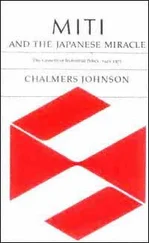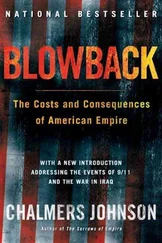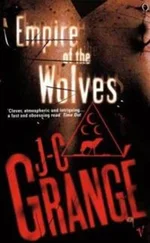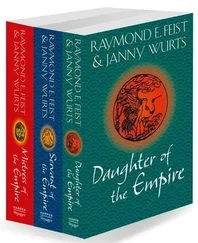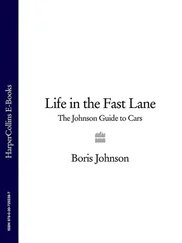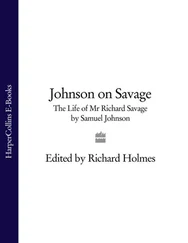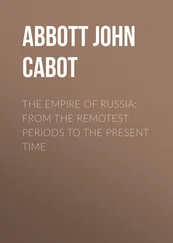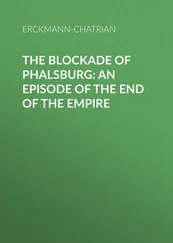Chalmers Johnson - Dismantling the Empire
Здесь есть возможность читать онлайн «Chalmers Johnson - Dismantling the Empire» весь текст электронной книги совершенно бесплатно (целиком полную версию без сокращений). В некоторых случаях можно слушать аудио, скачать через торрент в формате fb2 и присутствует краткое содержание. Год выпуска: 2010, Издательство: Metropolitan Books, Жанр: Старинная литература, на английском языке. Описание произведения, (предисловие) а так же отзывы посетителей доступны на портале библиотеки ЛибКат.
- Название:Dismantling the Empire
- Автор:
- Издательство:Metropolitan Books
- Жанр:
- Год:2010
- ISBN:нет данных
- Рейтинг книги:5 / 5. Голосов: 1
-
Избранное:Добавить в избранное
- Отзывы:
-
Ваша оценка:
- 100
- 1
- 2
- 3
- 4
- 5
Dismantling the Empire: краткое содержание, описание и аннотация
Предлагаем к чтению аннотацию, описание, краткое содержание или предисловие (зависит от того, что написал сам автор книги «Dismantling the Empire»). Если вы не нашли необходимую информацию о книге — напишите в комментариях, мы постараемся отыскать её.
Dismantling the Empire — читать онлайн бесплатно полную книгу (весь текст) целиком
Ниже представлен текст книги, разбитый по страницам. Система сохранения места последней прочитанной страницы, позволяет с удобством читать онлайн бесплатно книгу «Dismantling the Empire», без необходимости каждый раз заново искать на чём Вы остановились. Поставьте закладку, и сможете в любой момент перейти на страницу, на которой закончили чтение.
Интервал:
Закладка:
There is a direct line between the attacks on September 11, 2001—the most significant instance of blowback in the history of the CIA—and the events of 1979. In that year, revolutionaries threw both the shah and the Americans out of Iran, and the CIA, with full presidential authority, began its largest ever clandestine operation: the secret arming of Afghan freedom fighters to wage a proxy war against the Soviet Union, which involved the recruitment and training of militants from all over the Islamic world. Steve Coll’s book is a classic study of blowback and is a better, fuller reconstruction of this history than the Final Report of the National Commission on Terrorist Attacks upon the United States (the “9/11 Commission Report”).
From 1989 to 1992, Coll was the Washington Post ’s South Asia bureau chief, based in New Delhi. Given the CIA’s paranoid and often self-defeating secrecy, what makes his book especially interesting is how he came to know what he claims to know. He has read everything on the Afghan insurgency and the civil wars that followed, and he has been given access to the original manuscript of Robert Gates’s memoir (Gates was the CIA director from 1991 to 1993), but his main source is some two hundred interviews conducted between the autumn of 2001 and the summer of 2003 with numerous CIA officials as well as politicians, military officers, and spies from all the countries involved except Russia. He identifies CIA officials only if their names have already been made public. Many of his most important interviews were on the record, and he quotes from them extensively.
Among the notable figures who agreed to be interviewed were Benazir Bhutto, who was candid about having lied to American officials for two years about Pakistan’s aid to the Taliban, and Anthony Lake, the U.S. national security adviser from 1993 to 1997, who let it be known that he thought CIA director James Woolsey was “arrogant, tin-eared and brittle.” Woolsey was so disliked by Clinton that when an apparent suicide pilot crashed a single-engine Cessna airplane on the south lawn of the White House in 1994, jokers suggested it might be the CIA director trying to get an appointment with the president.
Among the CIA people who talked to Coll are Gates; Woolsey; Howard Hart, Islamabad station chief in 1981; Clair George, former head of clandestine operations; William Piekney, Islamabad station chief from 1984 to 1986; Cofer Black, Khartoum station chief in the mid-1990s and director of the Counterterrorist Center from 1999 to 2002; Fred Hitz, a former CIA inspector general; Thomas Twetten, deputy director of operations, 1991–93; Milton Bearden, chief of station at Islamabad, 1986–89; Duane R. “Dewey” Clarridge, head of the Counterterrorist Center from 1986 to 1988; Vincent Cannistraro, an officer in the Counterterrorist Center shortly after it was opened in 1986; and an official Coll identifies only as “Mike,” the head of the “bin Laden Unit” within the Counterterrorist Center from 1997 to 1999, who was subsequently revealed to be Michael F. Scheuer, the anonymous author of Imperial Hubris: Why the West Is Losing the War on Terror .
In 1973, General Sardar Mohammed Daoud, the cousin and brother-in-law of King Zahir Shah, overthrew the king, declared Afghanistan a republic, and instituted a program of modernization. Zahir Shah went into exile in Rome. These developments made possible the rise of the People’s Democratic Party of Afghanistan, a pro-Soviet communist party, which, in early 1978, with extensive help from the USSR, overthrew President Daoud. The communists’ policies of secularization in turn provoked a violent response from devout Islamists. The anticommunist revolt that began at Herat in western Afghanistan in March 1979 originated in a government initiative to teach girls to read. The fundamentalist Afghans opposed to this were supported by a triumvirate of nations—the United States, Pakistan, and Saudi Arabia—with quite diverse motives, but the United States didn’t take these differences seriously until it was too late. By the time the Americans woke up, at the end of the 1990s, the radical Islamist Taliban had established its government in Kabul. Recognized only by Pakistan, Saudi Arabia, and the United Arab Emirates, it granted Osama bin Laden freedom of action and offered him protection from American efforts to capture or kill him.
Coll concludes:
The Afghan government that the United States eventually chose to support beginning in the late autumn of 2001—a federation of Ahmed Shah Massoud’s organization [the Northern warlords], exiled intellectuals and royalist Pashtuns—was available for sponsorship a decade before, but the United States could not see a reason then to challenge the alternative, radical Islamist vision promoted by Pakistani and Saudi intelligence. . . . Indifference, lassitude, blindness, paralysis and commercial greed too often shaped American foreign policy in Afghanistan and South Asia during the 1990s.
FUNDING THE FUNDAMENTALISTS
The motives of the White House and the CIA were shaped by the Cold War: a determination to kill as many Soviet soldiers as possible and the desire to restore some aura of rugged machismo as well as credibility that U.S. leaders feared they had lost when the shah of Iran was overthrown. The CIA had no intricate strategy for the war it was unleashing in Afghanistan. Howard Hart, the agency’s representative in the Pakistani capital, told Coll that he understood his orders as “You’re a young man; here’s your bag of money, go raise hell. Don’t fuck it up, just go out there and kill Soviets.” These orders came from a most peculiar American. William Casey, the CIA’s director from January 1981 to January 1987, was a Catholic Knight of Malta educated by Jesuits. Statues of the Virgin Mary filled his mansion, called Maryknoll, on Long Island. He attended mass daily and urged Christianity on anyone who asked his advice. Once settled as CIA director under Reagan, he began to funnel covert action funds through the Catholic Church to anticommunists in Poland and Central America, sometimes in violation of American law. He believed fervently that by increasing the Catholic Church’s reach and power he could contain communism’s advance, or reverse it. From Casey’s convictions grew the most important U.S. foreign policies of the 1980s: support for an international anti-Soviet crusade in Afghanistan and sponsorship of state terrorism in Nicaragua, El Salvador, and Guatemala.
Casey knew next to nothing about Islamic fundamentalism or the grievances of Middle Eastern nations against Western imperialism. He saw political Islam and the Catholic Church as natural allies in the counterstrategy of covert action to thwart Soviet imperialism. He believed that the USSR was trying to strike at the United States in Central America and in the oil-producing states of the Middle East. He supported Islam as a counter to the Soviet Union’s atheism, and Coll suggests that he sometimes conflated lay Catholic organizations such as Opus Dei with the Muslim Brotherhood, the Egyptian extremist organization, of which Ayman al-Zawahiri, Osama bin Laden’s chief lieutenant, was a passionate member. The Muslim Brotherhood’s branch in Pakistan, the Jamaat-e-Islami, was strongly backed by the Pakistani army, and Coll writes that Casey, more than any other American, was responsible for welding the alliance of the CIA, Saudi intelligence, and the army of General Mohammed Zia-ul-Haq, Pakistan’s military dictator from 1977 to 1988. On the suggestion of the Pakistani Inter-Services Intelligence (ISI) organization, Casey went so far as to print thousands of copies of the Koran, which he shipped to the Afghan frontier for distribution in Afghanistan and Soviet Uzbekistan. He also fomented, without presidential authority, Muslim attacks inside the USSR and always held that the CIA’s clandestine officers were too timid. He preferred the type represented by his friend Oliver North.
Читать дальшеИнтервал:
Закладка:
Похожие книги на «Dismantling the Empire»
Представляем Вашему вниманию похожие книги на «Dismantling the Empire» списком для выбора. Мы отобрали схожую по названию и смыслу литературу в надежде предоставить читателям больше вариантов отыскать новые, интересные, ещё непрочитанные произведения.
Обсуждение, отзывы о книге «Dismantling the Empire» и просто собственные мнения читателей. Оставьте ваши комментарии, напишите, что Вы думаете о произведении, его смысле или главных героях. Укажите что конкретно понравилось, а что нет, и почему Вы так считаете.

